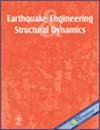Vertical Load-Carrying Capacity-Based Functionality Fragility Curve (VLCC-FFC) for Physics-Enhanced Probabilistic Seismic Resilience Assessment of Bridges: Methodology and Application
Abstract
Current practices for estimating postearthquake functionality of a bridge typically rely on assessing the physical damage and are often determined based on empirical engineering judgements. This approach can introduce significant variability in functionality estimates, further reducing the confidence level in probabilistic resilience assessment used for decision-making. To address this issue, this study develops a physics-enhanced probabilistic seismic resilience framework for bridges. In this framework, postevent functionality is physically evaluated by quantifying the loss of vertical load-carrying capacity (VLCC) using incremental dynamic analysis followed by pushdown analysis. A novel concept named VLCC-based functionality fragility curve (VLCC-FFC) is proposed. The VLCC-FFC represents the probability that the loss of VLCC will exceed a specific functionality state (FS, defined based on the level of VLCC loss) at a given seismic intensity measure. Furthermore, joint probability density functions (JPDFs) of VLCC loss and physical damage measures (e.g., residual drift ratio of a column) are developed for each FS to facilitate the probabilistic assessment of postevent residual functionality and the corresponding recovery process. The proposed framework is demonstrated through a case study of pile-shaft–supported girder bridges subjected to earthquakes and liquefaction-induced transverse spreading. The developed JPDFs for VLCC loss and residual drift ratio are available for implementation at https://bit.ly/JW912.

 求助内容:
求助内容: 应助结果提醒方式:
应助结果提醒方式:


